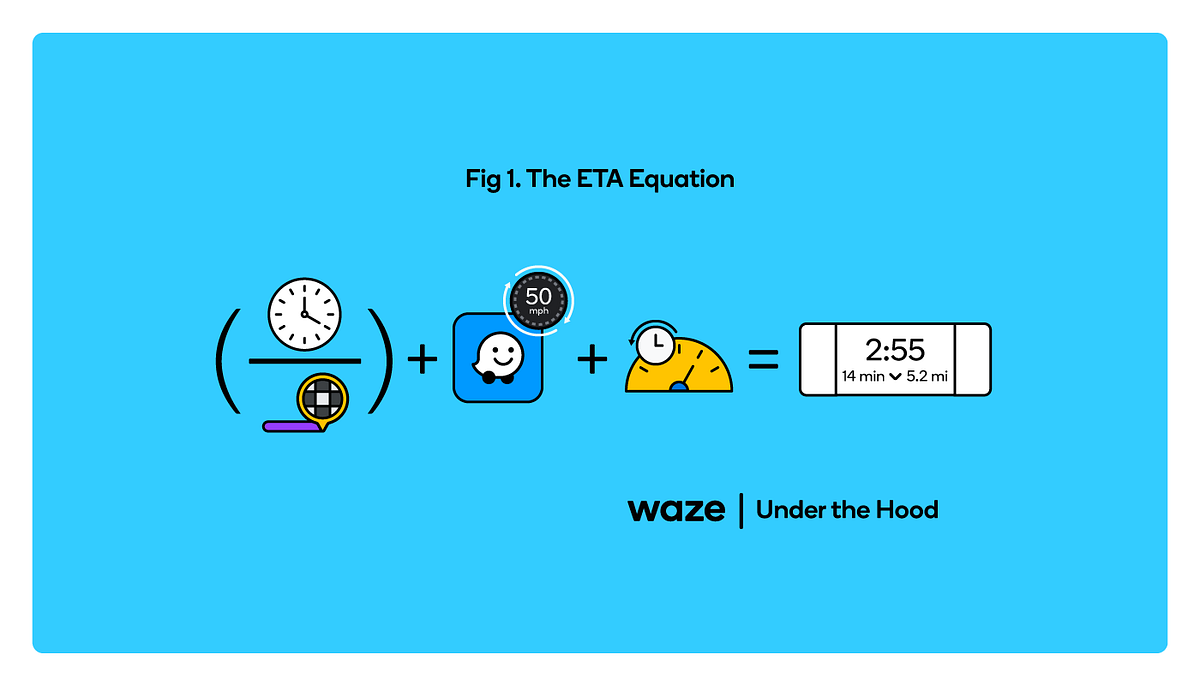
Under the hood: real-time eta and how waze knows you’re on the fastest route
- Select a language for the TTS:
- UK English Female
- UK English Male
- US English Female
- US English Male
- Australian Female
- Australian Male
- Language selected: (auto detect) - EN
Play all audios:

_SENIOR SOFTWARE ENGINEER YIGAL PETREANU ON CALCULATING YOUR ETA WITH HELP FROM THE WAZE COMMUNITY._ _Under the Hood gives you an inside look at different parts of Waze — straight from the
people working on them every day._ In my early days at Waze, I was on the road a lot and the app was my daily sidekick. I would get a report about a car on the side of the road, and then
five seconds later see the exact car. I knew I could trust the app because it had proven to me that Waze knows what’s going on. What I saw in the app is what I saw on the road, thanks to the
real people who constantly update the app with what _they _see on the road. The Waze community makes that trust possible. It’s the driving force behind everything — including our real-time
ETA calculations. NEED FOR SPEED: HOW WAZE CALCULATES YOUR ETA Accurate ETAs improve the driving experience by removing some of the unknowns. They help you see down the road and stay ahead
of traffic so you can get where you’re going on time. To give you the fastest routes, we need to calculate how long it will take you to get from point A to point B for each possible route.
To understand how the magic happens, you need to think about two things. The first one is HISTORICAL INFORMATION. We gather a history of the average speeds people drive on a specific segment
of the road for every half hour of every day of the week. That means we take 48 samples of the AVERAGE SPEED ON A SPECIFIC SEGMENT OF THE ROAD. And we constantly update that information. On
a regular day, we rely on historical information from the past eight weeks or so for a particular time. That is what we assume the traffic is if we don’t know anything else — that is the
ground truth for the day. The second piece is REAL-TIME UPDATES. A continual stream of updates about what’s currently happening all over the map. This is what makes Waze unique. When Wazers
keep the app open, they implicitly tell us the current speed on a specific stretch of the road. We take the real-time updates and the historical information and blend them together in a
mathematical equation designed to calculate your most likely speed. Then we use that speed to estimate your real-time ETA. STAYING ON COURSE When it comes to calculating ETA, the most
important input from drivers is speed. We filter out the outliers — the very slow or extremely fast drivers — so we can get an accurate idea of the average speed drivers are going on a
particular stretch of road. Another variable we consider is the type of vehicle you’re driving. For example, if you’re driving a motorcycle, your average speed might be different if you can
completely avoid a traffic jam. If you’re driving a bus, you might be allowed in a specific lane that gets you to your destination faster. When you share your specific vehicle type with us,
it affects the routes and ETAs we provide, so we can serve you better. Once you start driving, we assess what is going on every few minutes, comparing what we knew at the start of your drive
to what we know now. If what we find impacts your ETA, we do one of two things. We either notify you to let you know that traffic is building and you’ll be five minutes late. Or, if the
conditions have changed dramatically, we find a better route from where you are right now to your destination. We want to keep routes stable and easy to follow. If you’re one minute late,
there’s no point in sending you on a completely new route. On the other hand, we don’t want to keep you on a route if we know it’s not the best one. Because our calculations are done
frequently and in real time, we can quickly catch when something dramatic happens in front of you that impacts your drive and route you around it. ERRING ON THE SIDE OF CAUTION We always aim
for an exact ETA, but we err on the safe side to help ensure you get a great driving experience. After all, it’s better to arrive right on time or a few minutes early instead of a few
minutes late. If you constantly beat the Waze ETA, you’re probably driving a little faster than the average Wazer. In the future, we might be able to do some personalization on ETAs, so if
we see that time after time you are driving faster than other drivers on specific roads, we could factor that information into your ETA. THE WISDOM (AND ACTION) OF THE CROWD The biggest
differentiator between Waze and other navigation apps is the fact that the ETAs are driven by the community. Even if they’re not actively reporting activity or making edits to the map, each
Wazer helps contribute to accurate ETAs for everyone just by having the app open. Wazers help us understand average speeds and other traffic patterns that help inform our predictions. I have
a mantra for myself when I run into traffic: I’m waiting here, but I’m helping other people who are about to use Waze. The people behind me might get a route that goes around the traffic,
and they’ll know what to expect on the road. So in a very literal sense, each Wazer is the driving force behind each ETA.
